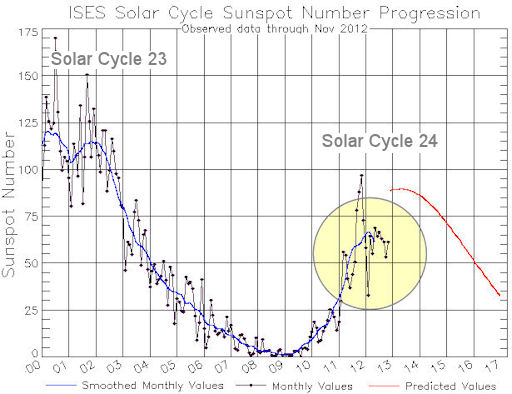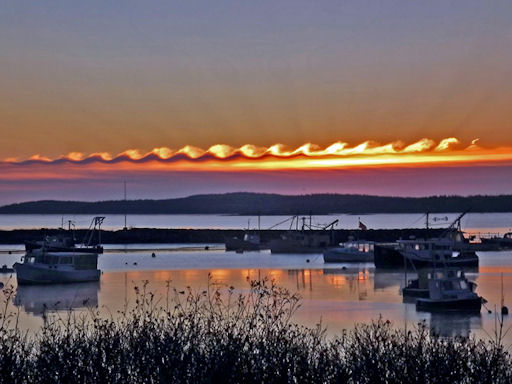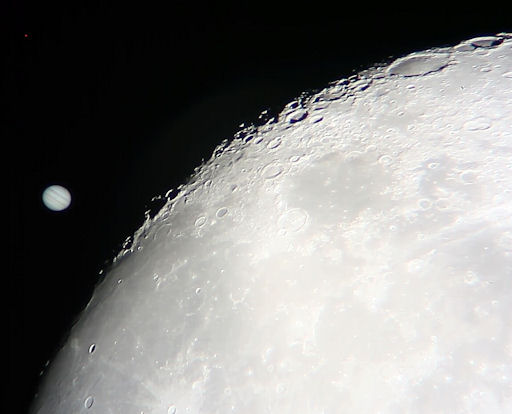They came from outer space--and you can have one! Genuine meteorites are now on sale in the Space Weather Store. | | |
INCOMING SOLAR WIND: A relatively weak stream of solar wind is expected to brush against Earth's magnetic field on Dec. 28-29. NOAA forecasters estimate a 10% chance of polar geomagnetic storms during the next 24 hours. Aurora alerts: text, voice.
SOLAR CYCLE UPDATE: 2013 is only days away, and according to most forecasters, Solar Max should be approaching as well. But is it? Barely-increasing sunspot counts and anemic solar activity suggest an interesting possibility: Perhaps Solar Max is already here. This plot of measured vs. predicted sunspot numbers illustrates the idea:

The blue curve traces monthly sunspot numbers measured since 2000. The red curve is the prediction of the NOAA-led Solar Cycle Prediction Panel. So far, Solar Cycle 24 is underperforming even compared to the panel's low expectations.
There is still a strong chance that Cycle 24 will rebound and peak in 2013 as expected. It might even be a double-peaked cycle like the cycle before it. As 2013 nears only one thing is certain: we don't know what will happen. Stay tuned. Solar flare alerts: text, voice.
VAN GOGH CLOUDS: On Christmas morning, Gene Hart of Jonesport, Maine, woke up early to enjoy the sunrise before opening presents. What he saw may have been the best gift of all. "There was a cloud formation showing a remarkable series of wave shapes," says Hart. "They were backlit by the rising sun over Moosabec Reach." He snapped this picture of the harbor using a 14-megapixel digital camera:

"I also took some 28x zoom images of the wave structure," says Hart. The close-ups are a must-see.
These clouds, sometimes called "billow clouds," are produced by the Kelvin-Helmholtz instability when horizontal layers of air brush by one another at different velocities. A better name might be van Gogh clouds: It is widely believed that these waves in the sky inspired the swirls in van Gogh's masterpiece The Starry Night.
Realtime Space Weather Photo Gallery
CHRISTMAS COVER-UP: When the sun went down on Christmas, a pair of bright lights rose in the east; Jupiter and the Moon were having a holiday conjunction. In Brazil, the pair were so close, the Moon completely covered Jupiter. Marcelo Domingues of Brasilia snapped this picture seconds before the occultation:

"It was a beautiful event," he says.
"What a perfect Christmas gift this was!" adds Gustavo Rojas of São Carlos. "I managed to capture the giant planet just as he started to disappear behind the lunar disk."
In case you missed it, there will be more lunar occultations of Jupiter in 2013. A complete list is available from the International Occultation Timing Association.
Realtime Jupiter Photo Gallery
Realtime Aurora Photo Gallery
Realtime Noctilucent Cloud Photo Gallery
[previous years: 2003, 2004, 2005, 2006, 2007, 2008, 2009, 2011]

